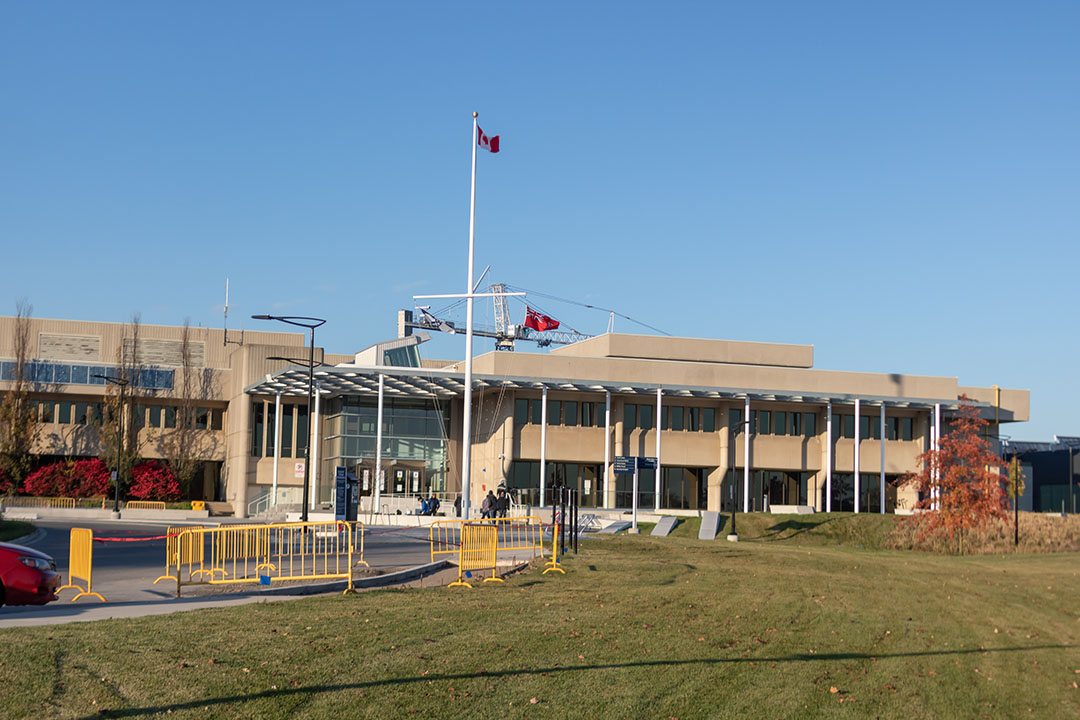The last UTM and UTSC Governing Council meetings of the year were held on May 19 and May 20 respectively, where the UTM capital projects update and the UTSC budget report were presented. The capital projects report provided an update on construction projects at the UTM campus and the budget report broke down UTSC’s expected expense budget and revenue for the 2021–2022 academic year.
UTM capital projects update
The UTM capital projects report, presented by UTM’s chief administrative officer, Saher Fazilat, only covered level two projects — projects that cost between $5 million and $20 million to complete — and level three projects — projects that have costs of over $20 million.
The level two capital projects — the Student Services Hub (SSH) and the Robotic Laboratory Environment (RLE) building — were presented first. The SSH is still in the design stages with construction scheduled to begin in December 2021. Its goal is to provide a central location for all student services where the old campus food court was situated. “This is a one stop place for all students, for all their needs,” Fazilat explained. “Rather than having student services all over the campus like we have them now, it will be one place where students can come and access those services.”
The Robotic Laboratory Environment building has been fully designed, but progress has been put on hold in response to concerns about an at-risk species in the natural area where the building is meant to be constructed. “Once we have that study completed and we understand what can be built here and [what] cannot be built here, we will then move forward with the project accordingly,” Fazilat reported.
The SSH project is forecasted to be completed by February 2023 and the RLE by fall 2022.
The level three capital projects — the New Science Building; the Arts, Culture and Technology Building; and a new residence building — were presented next. The Arts, Culture and Technology Building is expected to stay in the design stage until 2022. The New Science Building was approved back in 2017 and it is currently under construction; it is set to be completed in 2023.
The final capital project presented was the new residence building, scheduled to be completed in September 2024. The building is meant to help provide more housing support for students.
“We’re keeping our fingers crossed; if we go back to the pre-pandemic level, this would provide [relief] for the student housing team, so that we can offer guaranteed housing to all first-year students and… some of the international students whose parents desperately call us to find a spot, even in upper years,” said Fazilat.
UTSC budget report
The UTSC operating budget was presented by Andrew Arifuzzaman, the UTSC’s chief administrative officer. Arifuzzaman mentioned the increasing number of applicants to the UTSC, which has risen from just over 15,000 applicants in 2011 to almost 30,000 applicants in 2021. The surge in applicants has brought awareness to the need for more space on campus, which is being handled by introducing more capital projects.
“The campus has been very short of space, which is why you see a lot of capital building projects that are coming,” Arifuzzaman explained. “And now, as our space plans are coming to fruition and the campus is building the much-needed infrastructure that it needs, we will get back up to [having] close to 95 per cent of the space standard.”
The net expense budget for the 2020–2021 year was $311 million and it is estimated to be $337 million in the 2021–2022 year. It is projected to grow to $380 million by 2025–2026. International fees are expected to amount to $204 million, which would make up over half of the UTSC’s expected revenue for 2021–2022.
“The remaining dollars are coming from either government or domestic student tuition or other sources of revenue — things like our parking operation, and so forth,” said Arifuzzaman.
Expenditures on salaries and benefits make up 54 per cent of UTSC’s 2021–2022 operating expense budget, reserves and contingencies make up 27 per cent, and supplies and services make up 10 per cent. The large sum being spent in reserves and contingencies is meant to support capital projects, while the remainder goes to expenses like maintenance and repairs, equipment, research support, debt services costs, financial aid, library acquisitions, and utilities.
Some priorities of the 2021–2022 UTSC operating budget are investing in new faculty positions, student support, infrastructure, community partnerships, communications, and UTSC’s COVID-19 response.


